Dhanushkodi – a town swallowed by a cyclone
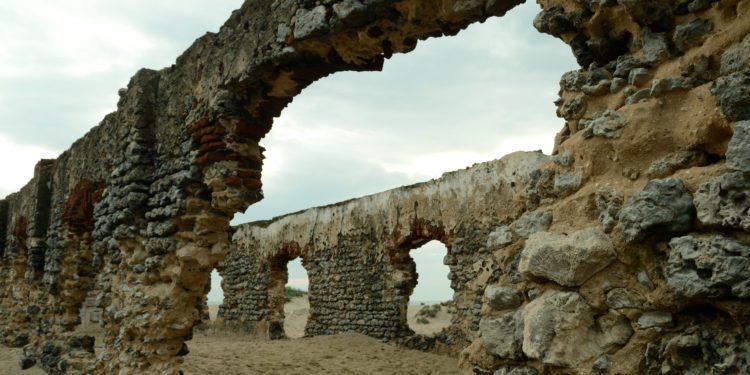
Sheets of rain tumble down from the skies as we reach the highest point in Rameshwaram town, nestled in down South Tamil Nadu. It is a temple where pilgrims believe, that Lord Rama’s footsteps have been etched on the sands of time. There is nothing archaic about this renovated shrine; however the landscape is rather dramatic. A road cuts across the ocean and the temple stands at the end of it forming a little peninsula.
We enter a small enclosure and pay our respects to the stone carved footprints. As more devotees arrive, we head out to a small terrace. The rains have stopped and the skies have cleared. The sea spreads out like the wings of an eagle and I see an uninterrupted view of the coastline with Srilanka somewhere near the horizon.
The eye takes in as much of the sea as it can but amidst the blue green oceans is an empty tract of land filled with sand that stretches for miles. It is neither an ordinary beach nor a tourist’s hangout.
Yet, destiny has placed it on the tourist map. Five decades ago, a natural calamity had wiped Dhanushkodi into oblivion, but the ruins still remain, narrating a story of this erstwhile flourishing town, that has the only land border between India and Srilanka. . Life came to a standstill here in December 1964 , when a cyclone robbed the town of all its inhabitants. We decide to head out to this ghost town to listen to its eerie tales.
The journey they say is the destination. And so it is, as we travel to Dhanushkodi from Rameshwaram. It is at a distance of 20 kms but there is hardly a road that will take us there. An auto drops us at a beach outside Rameshwaram town, where small trucks wait to ferry tourists wanting to visit the ruins. We climb on to one of them and along with ten other tourists, set out on our journey.
It is late in the afternoon and the skies are grey. We drive through wastelands layered with sands and dotted with shrubs that it feels like we are in a desert. Suddenly the road disappears and the landscape changes dramatically. The vast expanse of sands is now filled with water and we drive along the edge of the wetlands – there is neither a shore nor a beach. The water playfully splashes against the vehicle, forming waves that look deceptively calm. The truck plunges into the waters and is carried along by the waves.
As I look out of the window, there is not a strip of land anywhere. While ours is the only vehicle cruising through the waters, yonder ahead of us, I see another truck stuck in the marshlands. They struggle to pull themselves out of the quagmire and we pause in our journey to give them a hand. I close my eyes and imagine what the landscape would look like from the skies. Two tiny trucks chugging along in a seascape with no path ahead of us, as we cut across the waters. Finally we see patches of marshlands, as the waters recede. We are still driving in the middle of nowhere, but a dusty road emerges literally out of the blue and leads us to Dhanushkodi.
I am not prepared for what I see . It is stark and empty – a town stripped of life and the barrenness hits me. Skeletal remains of a church and a temple along with some crumbled walls of homes lie scattered on the sands. There is hardly any ruin in the town – just some broken and fragmented bricks.
As we wander aimlessly, we stop by another barren stretch which was once a railway station. Deep in the sands lies buried a pair of railway tracks. A shiver runs through my spine as I see the ruins of the station buried in the sands.
In the heydays, Dhanushkodi connected the two countries – India and Srilanka with a railway and ferry service. It was called the Boat Mail . A train used to leave Madras (now Chennai) and reach a pier near Dhanushkodi town from where passengers boarded a ferry to Srilanka. The railway line also connected Dhanushkodi to the main Pamban railway station. The last train was seen on the night when the storm surge stuck the town, swallowing it and all the 150 passengers on board. All of Dhanushkodi lies submerged under the waters.
I cannot shake the depressed feeling as I head out towards the sea. This is where the oceans meet – the Bay of Bengal and the Arabian Sea. The confluence is considered holy with the stamp of Ramayana all across it. The name “Dhanushkodi” itself is a slice of life from the epic, when Rama apparently at the behest of Vibeeshna broke the bridge (Ramar Sethu) with a single stroke from his bow after the war so that no other army would invade Srilanka. It is also referred to as the land’s end where Rama marked the spot for the bridge with one end of his bow. But I can barely reach there as swamps and bogs fill the shore and the land is flooded.
As I walk back, I see a few fishermen heading out into the ocean for their livelihood. And that is where I meet Pichimuthu. An old man, tanned by the sea with white flowing beard, Pichimuthu does not wish to remember the night of the cyclone. Born in Dhanushkodi, he says he was away that night but when he came back, his entire home had disappeared under the city. The sea had taken away his town and home, killing all the inhabitants. He was eight years old then.
Pichimuthu looks away into the sea and the sun sets creating a silhouette of him. The rays light up a lone boat in the dark grey waters which remains placid and calm. Yet in that lovely moment, a poignant silence surrounds us . And as the waves flow and ebb, they narrate the tragic tale of this forsaken town to those who care to listen.

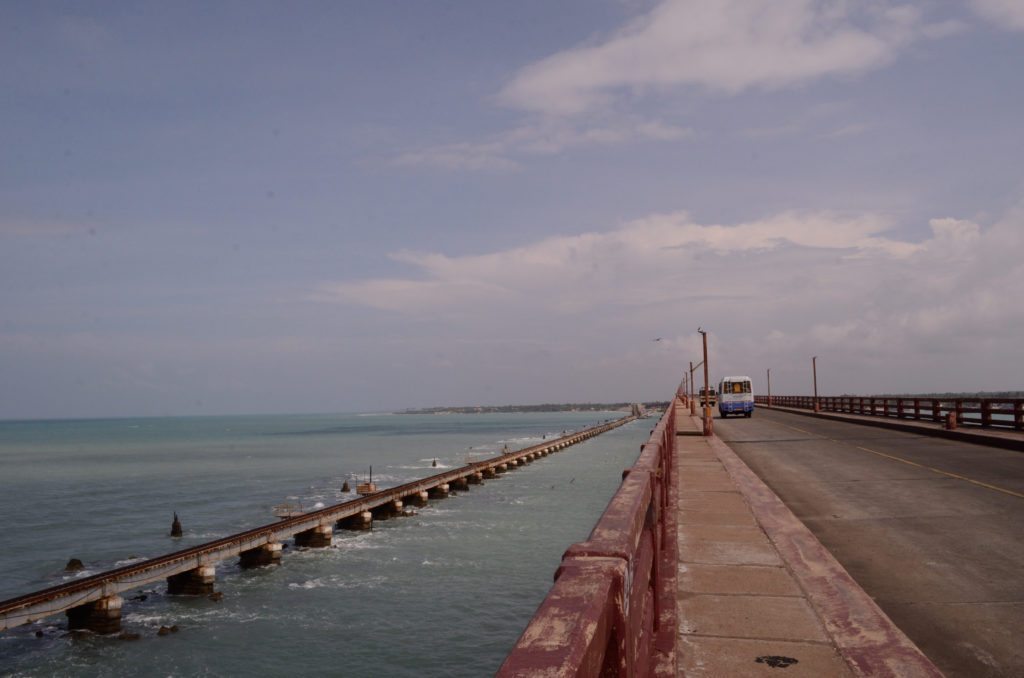
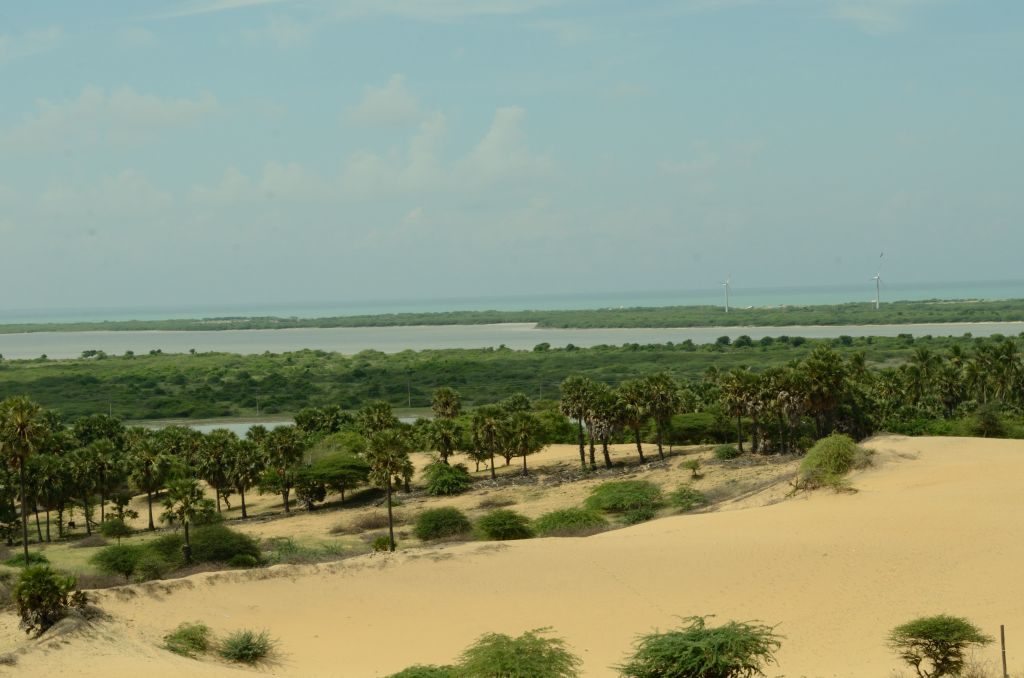

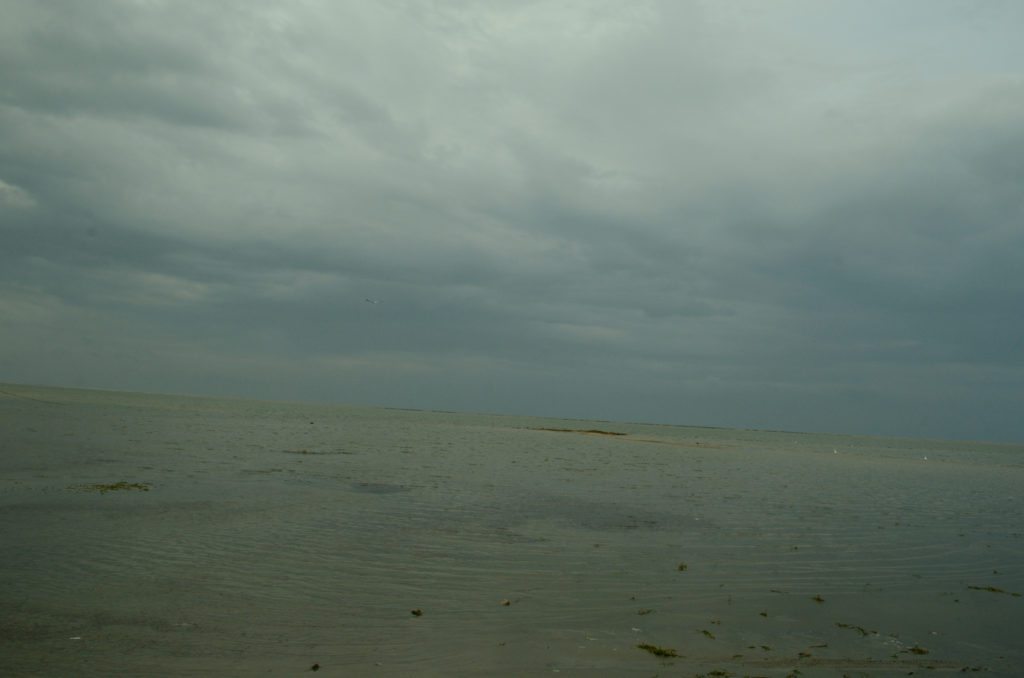
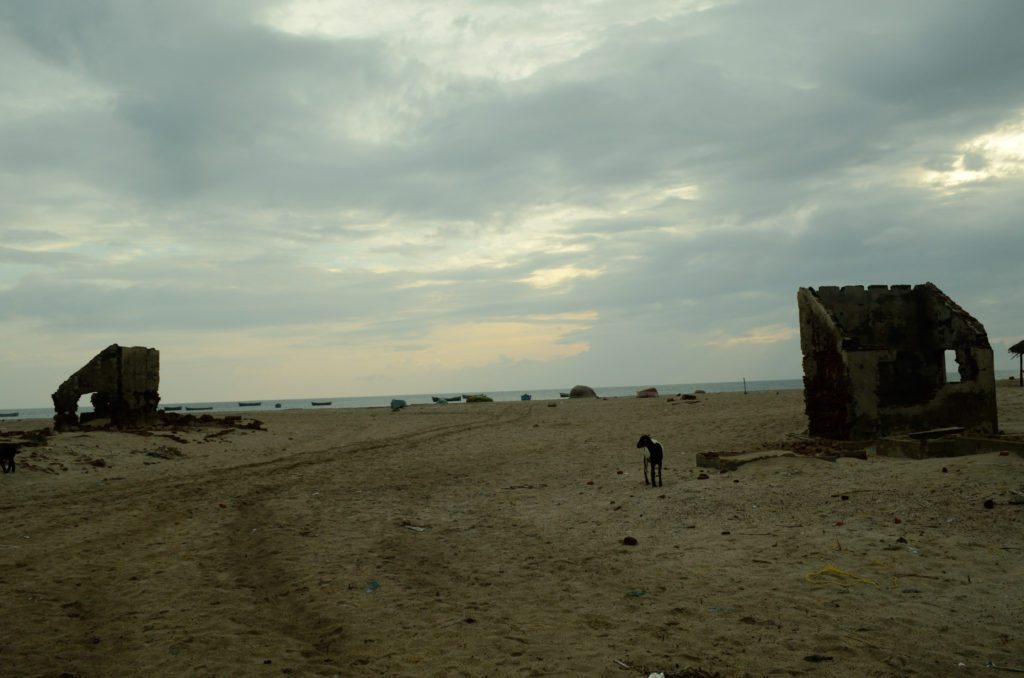
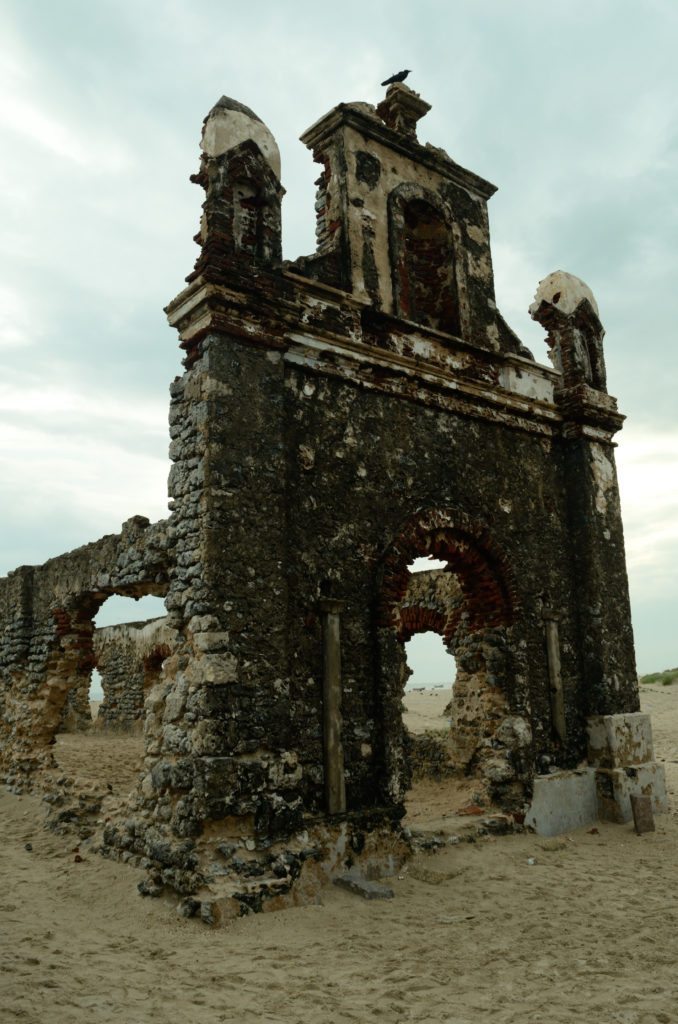
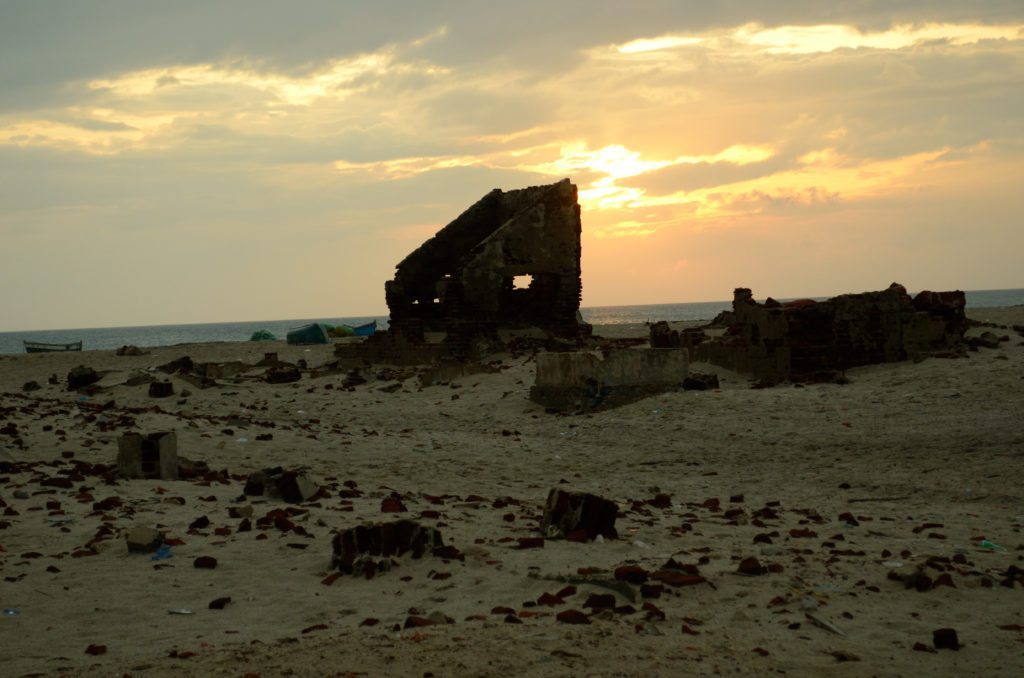


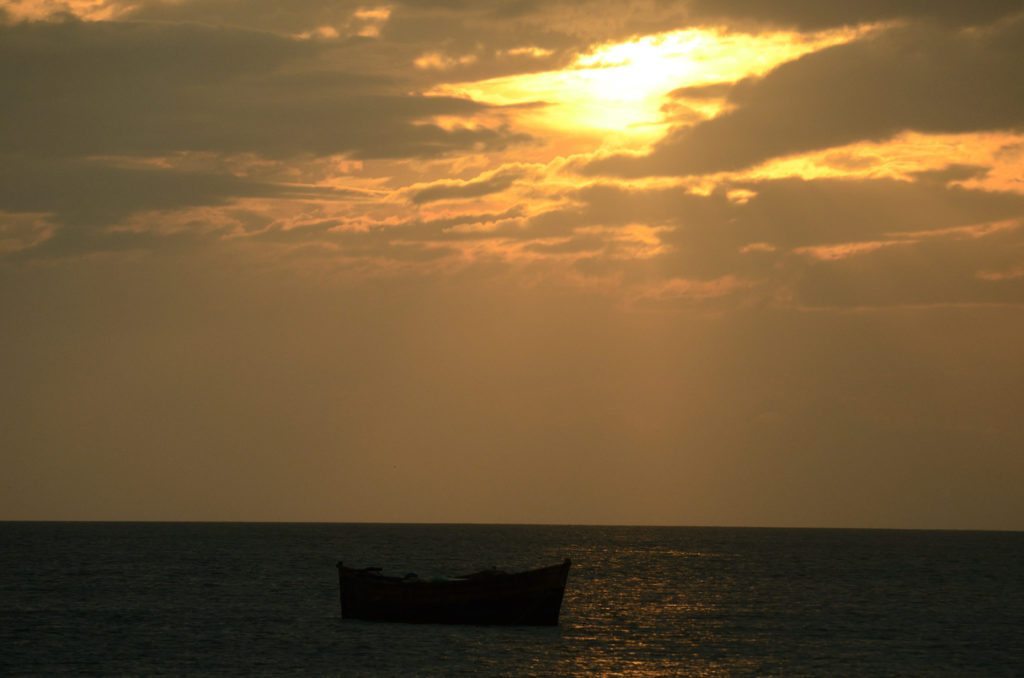
Such a brilliant narration, Lakshmi! Loved it.
Remember a couple of school vacations spent at Rameshwaram Road, a railhead where uncle was a station master. It catered to two sets of trains daily – an Express – the Rameshwaram Express – and a pair of slow-moving passenger trains. The station and its neighbourhood, sprang to life at the station bell alerting us ,. of an incoming train, as it leaves the previous station. The place goes to sleep, again the moment the trains puffs off from the platform, and ,moments later, you hear the long, wailing whistle that melts into silence as the train steams farther away from us.
Lovely narration..thanks for sharing your experience
Beautiful place. Nice pics.
My recent trip to Rameshwaram http://aruntravelpics.blogspot.in/2015/03/dhanushkodi-ghost-town.html
Hi Lakshmi,
I was alerted to this entry by an email from Linkedin.
Very well-written and what a story…
Tq!
Hi,
very nice narrative of a wonderful place. I had been there only in my childhood and hope to visit it sometime in coming future too.
btw I noticed this line “, his entire home had disappeared under the city.” I think you meant “under the sea”
Overall, I love the way you wrap the writeups.. looking forward to reading about more and more destinations 🙂
It’s like you have been to every dream travel destination of mine :P, in India.
Lucky you.
Still in my bucketlist.
Danushkodi wasn’t the kind of town deemed worthy of being re-built – if only, because adequate number of the uprooted survivors were not willing to return, and resettle there..